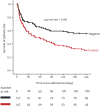Presentation, etiology, and outcome of brain infections in an Indonesian hospital: A cohort study
- PMID: 30564491
- PMCID: PMC6276332
- DOI: 10.1212/CPJ.0000000000000517
Presentation, etiology, and outcome of brain infections in an Indonesian hospital: A cohort study
Abstract
Background: Little detailed knowledge is available regarding the etiology and outcome of CNS infection, particularly in HIV-infected individuals, in low-resource settings.
Methods: From January 2015 to April 2016, we prospectively included all adults with suspected CNS infection in a referral hospital in Jakarta, Indonesia. Systematic screening included HIV testing, CSF examination, and neuroimaging.
Results: A total of 274 patients with suspected CNS infection (median age 26 years) presented after a median of 14 days with headache (77%), fever (78%), seizures (27%), or loss of consciousness (71%). HIV coinfection was common (54%), mostly newly diagnosed (30%) and advanced (median CD4 cell count 30/µL). Diagnosis was established in 167 participants (65%), including definite tuberculous meningitis (TBM) (n = 44), probable TBM (n = 48), cerebral toxoplasmosis (n = 48), cryptococcal meningitis (n = 14), herpes simplex virus/varicella-zoster virus/cytomegalovirus encephalitis (n = 10), cerebral lymphoma (n = 1), neurosyphilis (n = 1), and mucormycosis (n = 1). In-hospital mortality was 32%; 6-month mortality was 57%. The remaining survivors had either moderate or severe disability (36%) according to Glasgow Outcome Scale.
Conclusion: In this setting, patients with CNS infections present late with severe disease and often associated with advanced HIV infection. Tuberculosis, toxoplasmosis, and cryptococcosis are common. High mortality and long-term morbidity underline the need for service improvements and further study.
Figures



References
-
- Ruslami R, Ganiem AR, Dian S, et al. . Intensified regimen containing rifampicin and moxifloxacin for tuberculous meningitis: an open-label, randomised controlled phase 2 trial. Lancet Infect Dis 2013;13:27–35. - PubMed
-
- Laarhovenvan A, Dian S, Ruesen C, et al. . Clinical parameters, routine inflammatory markers, and LTA4H genotype as predictors of mortality among 608 patients with tuberculous meningitis in Indonesia. J Infect Dis 2017;215:1029–1039. - PubMed
Grants and funding
LinkOut - more resources
Full Text Sources
Research Materials
Miscellaneous
